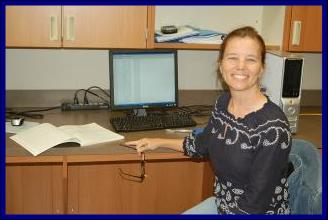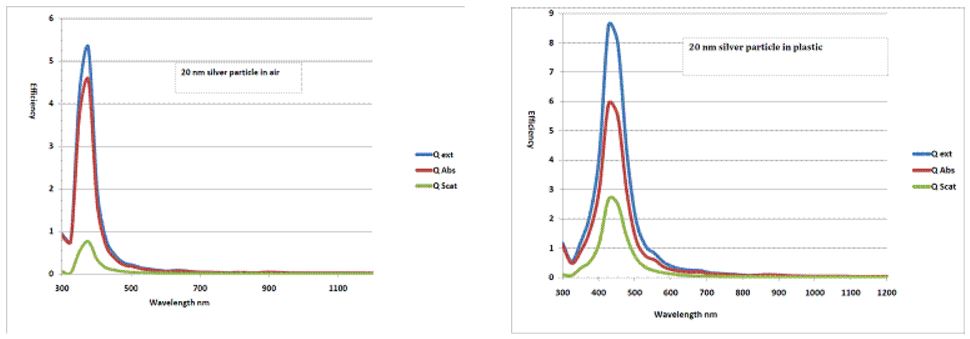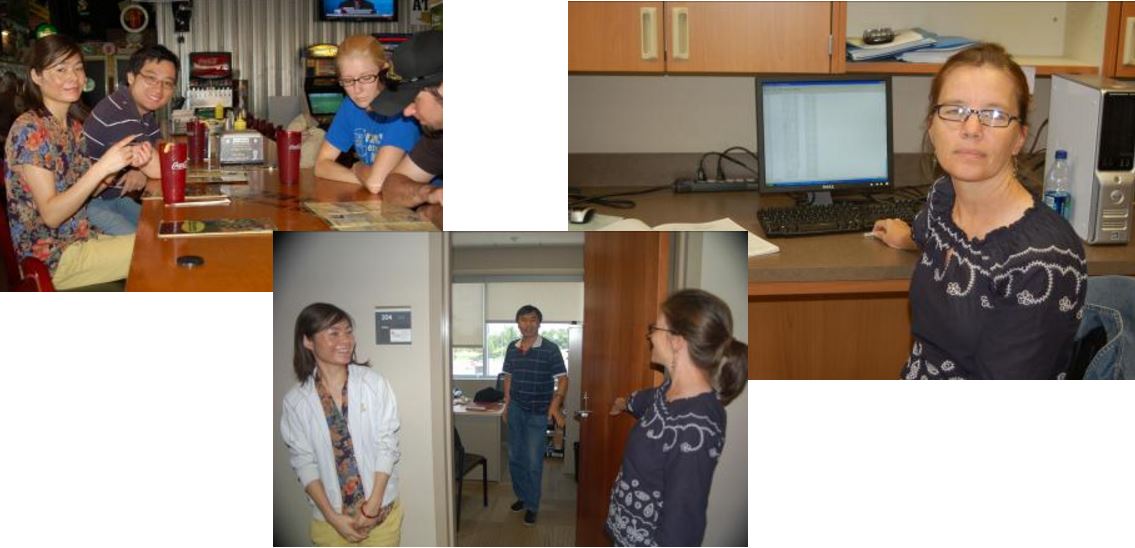 My name is Kay Miraglia and I am a chemistry and research teacher at Winter Springs High School in Winter Springs, FL. This link is designed to give a narrative of the six weeks that I spent in research in the summer of 2010 at University of Central Florida. The experience was funded by the National Science Foundation. My goal was to surround myself with a college level research experience. During the school year I expect my high school students to perform college level research so I wanted to know what that experience felt like. For a copy of the nanotechnology unit plan designed this summer click here. Enjoy
My name is Kay Miraglia and I am a chemistry and research teacher at Winter Springs High School in Winter Springs, FL. This link is designed to give a narrative of the six weeks that I spent in research in the summer of 2010 at University of Central Florida. The experience was funded by the National Science Foundation. My goal was to surround myself with a college level research experience. During the school year I expect my high school students to perform college level research so I wanted to know what that experience felt like. For a copy of the nanotechnology unit plan designed this summer click here. Enjoy
Week 1

When Dr. Zou brought me to the lab on the first morning I was unimpressed with what I had to work with. The lab consisted of a large room with cabinets lining the walls and desk top underneath. There were six desk top computers set up as work stations. There was a post doctoral researcher and two graduate student researchers in the lab. They were typing and staring at a bunch of numbers on the screen. Not too exciting. The only thing I knew about computers was how to type a letter, get my mail, print pictures, prepare a PowerPoint. If this required programming I was in trouble.
I spent the first three days reading the literature regarding surface plasmons and their relationship to nano-particles. The literature was a bit confusing but very enlightening! I was confused about how electromagnetic waves worked (light) so I went over to the physics department on campus and got a little lesson in the three dimensions of the EM spectrum. I developed a descent understanding of oscillation, absorption, electromagnetic waves.
Our first weekly meeting was a good start for me. Actually having to do so much research before I could start the research enabled me to gather resources for my students in order for them to follow my tracks so to speak.
Week 2

OK, enough with the reading! It’s time to get down to performing some experiments in the lab. Well, this is a computational lab. That is, this lab designs and tests products but they do it all on computers. The beauty of this is that I can design and test my own products. I don’t have to stand around watching someone else. All I need to do is come up with a product and a purpose-you know-a scientific question. The computer program that the lab group uses is a free program written in Linux. The program is called DDA (Discrete Dipole Approximation). I really don’t want to mess anything up but I would like to design some particle and see what it does when I shine light on it. I figured that gold is golden in color no matter what size or shape it is. I teach my students that the properties of a substance don’t change if you change their size. I was wrong! When metallic elements are in the nano-sized quantities they behave very differently when light is shone upon them. AND you can also change their light properties when you change their particle shape.
Taking myself through the same steps that I take my high schoolers through, I tried to come up with an engineering goal for a nanoparticle. Everybody in research was searching for particles that could absorb visible light. I wanted to find a particle that would absorb UV light. Perhaps placing it in a film or screen would be beneficial for sun protection. I would spend the next couple of days learning how to imput my particle size and shape information in the DDA program.
I actually was running my own simulations by the end of the second week. I was already thinking ahead for my next set of simulations when my first ones don’t turn out so well.
Week 3
Well, I don’t know how to use excel very well. I spent more time on google trying to get my graphs to turn out right. I ran 6 simulations in the third week. I spent a good deal of time trying to find a plastic epoxy refractive index information. You see you can engineer your nanoparticle and simulate light shining on it in water, air, silicon, or any other substrate that is not a conductor of electricity. I wanted to embed my particle in plastic–very clear plastic. Something with a refractive index close to air. My particles were barely absorbing UV in air. Embedding them in plastic made their absorption behavior change. They were absorbing in the blue wavelengths. This experience has sent me back and forth through the scientific process.
I’ve spent a good deal of time on the web page describing nano science and surface plasmons. My students will definitely learn what these things are. It is amazing that as a civilization we used Plasmon properties without ever knowing what they were.

Week 4
 Dr. Zou has asked me to look over the grant proposal that describes new research topics in plasmonics. While reading the proposal I realize some useful purposes for designing nano welled films. If you can get light to concentrate in areas on the film then that will provide light sensitive areas for molecules to attach. I am spending this week finishing up the web site for the grant requirement. I really want to put an illustration of absorbance and particle size in the web page so the undergrads are helping me create my own data. I am running absorbance simulations for silver spheres ranging from 10nm to 150nm. I am getting quick at the input with the DDA program. At our group meeting Dr. Zou volunteered the data that I will need to include on the web page. Good thing because the data from my experiments did not work out as planned.
Dr. Zou has asked me to look over the grant proposal that describes new research topics in plasmonics. While reading the proposal I realize some useful purposes for designing nano welled films. If you can get light to concentrate in areas on the film then that will provide light sensitive areas for molecules to attach. I am spending this week finishing up the web site for the grant requirement. I really want to put an illustration of absorbance and particle size in the web page so the undergrads are helping me create my own data. I am running absorbance simulations for silver spheres ranging from 10nm to 150nm. I am getting quick at the input with the DDA program. At our group meeting Dr. Zou volunteered the data that I will need to include on the web page. Good thing because the data from my experiments did not work out as planned.
Week 5
I am really rethinking my unit lesson in nano technology for my students. I need some type of physics labs to go with the unit. There is a great deal of reading and review writing but no hands-on experiences. Students really need to understand resonance and the electromagnetic spectrum to understand the phenomena of plasmons. I am including activities in resonance energy. I have included the full unit plan hyperlink at the top of this page. The plan includes a trip to this lab and the nanotechnology center on campus. My students enjoy coming on campus.
The remainder of this week will be dedicated to finding a zinc oxide particle that will absorb UV light. My silver particles did not absorb effectively in the UV range. Once I find the size and shape zinc that I want to test I will have to figure out how to program that information into the file parameters of the DDA program. Haining Wang and Jennifer Reed will help me with that. It will take several days to input and run the simulations in air and in plastic. I have a hard time remembering that variables have to be tested individually. This is very pain-staking. Each shape, each size, each dialectric (substrate) must be tested individually to see how it affects absorbance so that I can say without doubt what causes the particle to absorb in the UV range.
Week 6
I will wrap up any unfinished zinc data that needs to be analyzed for my last Thursday meeting. This has been one of the best experiences of my teaching career. We read about research and hear about research every day. This has given me a chance to do research in a field that is truly up and coming. Every week this summer I have heard about or seen products being developed using nanotechnology, many of them using the properties of surface plasmons. This seemingly mundane research lab has turned into a breeding ground for unexplained results and ‘what if’ scenarios. I am certain that this research group will find properties of materials that are new to the nano science community.
